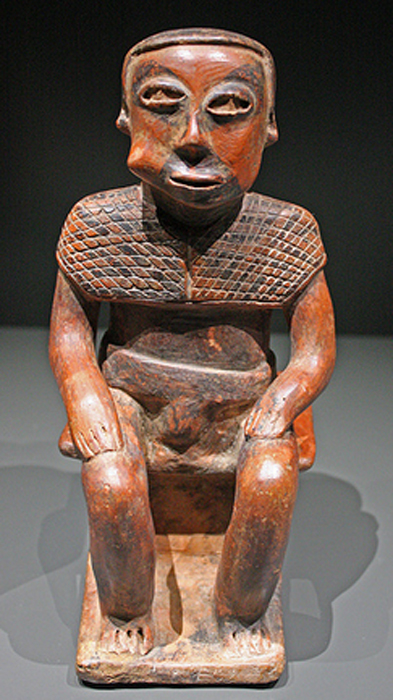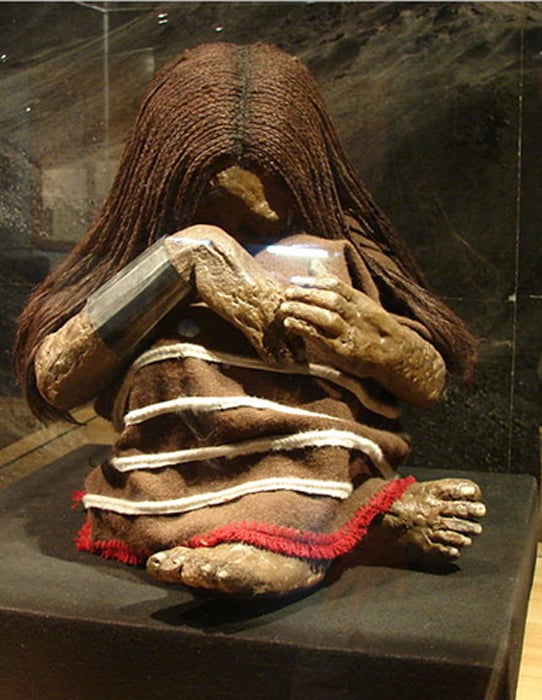
Analysis Shows Children were Given Drugs and Alcohol before Ritual Sacrifice 500 Years Ago
The remarkably preserved mummified remains of three children were found on the summit of Volcan Llullaillaco in Argentina over a decade ago. The ‘Maiden’ was 13 years old when she met her demise and her companions ‘Llullaillaco Boy’ and ‘Lightning Girl’ were between the ages of 4-5 years old. A 2012 analysis of the bodies revealed some startling details – the children had been drugged and given alcohol over a year-long ritual process in preparation for their ultimate sacrifice.
The conclusion that the three had consumed coca leaves (from which cocaine is derived) and beer came through analysis of hair samples on the frozen bodies. The researchers also discovered that the children likely had a peasant background (primarily consuming common vegetables) but they ate food set aside for elite members of society in the time leading up to their deaths. Historical accounts support this, stating that children were carefully selected and followed a series of sacred ceremonies before they were sacrificed.
- Peruvian child mummy with elongated skull undergoes analysis
- The practice of sacrifice in Iron Age Britain
- Five heart-warming and heart-breaking archaeological discoveries

Example of a terracotta statuette of a coca leaf chewing figure from the Nariño culture, Colombia. (Frans Vandewalle/CC BY NC 2.0) The coca leaf has often had ritual usage in South American cultures.
There were some differences in the treatment of the children as well. The ‘Maiden’ ate an elite diet and received coca and alcohol for 21 months before she died, but the younger children only had these substances for nine months before their sacrifice.

A photo of the replica of the younger girl – the Plomo Mummy - on display at the Museo Nacional de Historia Natural in Santiago, Chile. (Jason Quinn/CC BY SA 3.0)
The Maiden also stood apart as she was found wearing a feathered headdress, had her hair styled in elaborate braids, and was discovered with numerous grave goods on a textile which was draped over her knees.

Llull Maiden #23 Tupus (shawl pins) and ornaments. Photo © Johan Reinhard, Ph.D. (used with permission)
Results of the study also suggest Llullaillaco Boy had been badly treated before his death – he was found with blood on his clothes, lice, and had been wrapped tightly in a cloth. The researchers suggest he may have been suffocated. Lightening Girl apparently did not receive the extra preparation of the Maiden nor the trauma of Llullaillaco Boy.
- The Fearsome Wicker Man: An Eerie Way Druids Committed Human Sacrifice
- Shocking Discovery Shows Ancient Koreans were Sacrificed for Building Project
- Would You Dare to Visit an Ancient Maya Cave of Human Sacrifice? If So, Head to Belize

Llullaillaco Boy. (Joseph Castro/CC BY 2.0)
Andrew Wilson, study lead and archaeologist at the University of Bradford in the U.K. explained why the Maiden may have been treated differently than her younger companions. He said, “The Maiden was perhaps a chosen woman selected to live apart from her former life, among the elite and under the care of the priestesses.”
This type of sacrificial practice was likely used as a form of social control. While it was said to be an honor to be selected for the ritual, sacrifices also produced a fearful environment. Nonetheless, parents were expected to show no fear or anger if their children were chosen. Perhaps further study of the three frozen mummies of Llullaillaco will provide more insight on ritual sacrifice in their time and culture.
Top Image: ‘La Doncella’ (the Maiden), one of the mummified ‘Children of Llullaillaco’ in Salta province, Argentina. Source: grooverpedro/CC BY 2.0















